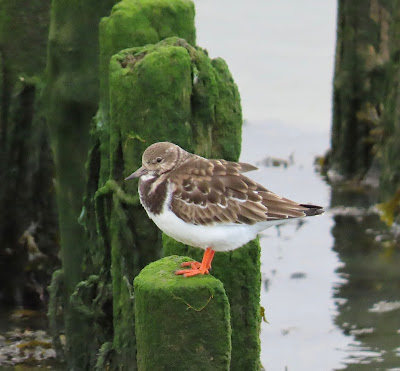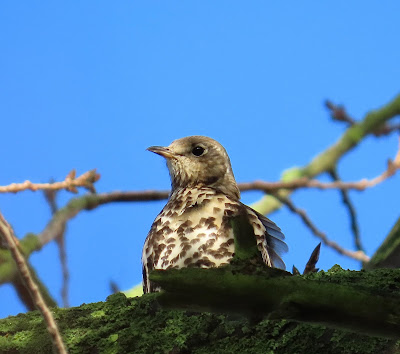A small selection of waders such as this redshank, were feeding on the last of the Strood mud before the tide covered it on Friday late morning. A flock of 36 black-tailed godwits and 20 avocets were seen flying down channel at high tide.
In the sky above Feldy Marsh on the mainland was a large flock of 2000 golden plovers on Friday.
Late Friday afternoon just after dark, a male tawny owl was heard "hooting" from a neighbour's garden in Firs Chase.
At East Mersea on Friday six snow buntings including two males were seen at the Point by Jonathan Norgate, also there 40 turnstones and three sanderling. A water pipit was also reported at the Point by a visiting birder. A Winter Moth was also noted by Jonathan in the Cudmore Grove toilet building, while later a young red squirrel was seen in Shop Lane.
Michael Thorley reported seven little egrets and 600 dunlin near Ivy Dock on Friday.
On Thursday 28th birds noted during the Strood seawall walk at high tide included the regular great white egret, two marsh harriers, 40 avocets, 300 starlings feeding in a field, two male stonechats and two rock pipits. The mistle thrush perched high in the mistletoe-laden poplar trees by the Firs Caravan park, while a sparrowhawk flashed over Firs Chase.
Near Meeting Lane on Thursday, Michael Thorley reported seeing great spotted woodpecker in his garden, also four great tits and eight blue tits back again after a long absence.
A red squirrel was seen in Cross Lane on Thursday by Michael.
On Tuesday 26th late afternoon, only six marsh harriers were counted by Andy Field heading into the Langenhoe harrier roost. A low count compared with recent winters and also compared with the recent high count of 43 marsh harriers at the Old Hall Marshes roost by Steve Hunting and team on Sunday 24th. Andy also saw two red-breasted mergansers in the Pyefleet and three corn buntings at Reeveshall on Tuesday.
On Christmas Day Michael Thorley was out stretching his legs at Coopers Beach / Fen Farm and saw 60 brent geese flying west in smallish groups, 24 turnstone on shingle and five oystercatchers.
At Maydays farm on Friday 22nd Martin Cock reported 300+ fieldfares, a few redwing and also a Chinese water deer.


















































